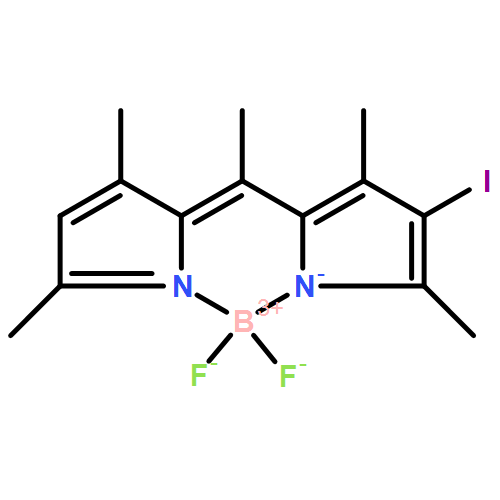Abstract
Several metal complexes with a boron dipyrromethene (BODIPY)-functionalized N-heterocyclic carbene (NHC) ligand 4 were synthesized. The fluorescence in [(4)(SIMes)RuCl2(ind)] complex is quenched (Φ=0.003), it is weak in [(4)PdI2(Clpy)] (Φ=0.033), and strong in [(4)AuI] (Φ=0.70). The BODIPY-tagged complexes can experience pronounced changes in the brightness of the fluorophore upon ligand-exchange and ligand-dissociation reactions. Complexes [(4)MX(1,5-cyclooctadiene)] (M=Rh, Ir; X=Cl, I; Φ=0.008–0.016) are converted into strongly fluorescent complexes [(4)MX(CO)2] (Φ=0.53–0.70) upon reaction with carbon monoxide. The unquenching of the Rh and Ir complexes appears to be a consequence of the decreased electron density at Rh or Ir in the carbonyl complexes. In contrast, the substitution of an iodo ligand in [(4)AuI] by an electron-rich thiolate decreases the brightness of the BODIPY fluorophore, rendering the BODIPY as a highly sensitive probe for changes in the coordination sphere of the transition metal.
